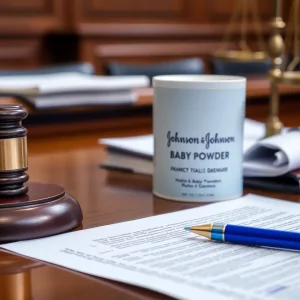Concerns about Microplastics in Charleston’s Waterways
Charleston, South Carolina is facing a growing challenge that many may not think about on their daily walks along the waterfront: microplastics in our waterways. These tiny plastic particles are not only a problem for fish and other aquatic life but also pose significant risks to humans. The Charleston Waterkeeper has been monitoring these particles, and their findings have sparked an important conversation about the health of our environment and our communities.
The Dangers of Microplastics
According to experts from Charleston Waterkeeper, microplastics come from a variety of sources and can carry harmful substances. Britney Prebis, the Community Science Manager, pointed out that these tiny particles can harbor heavy metals, harmful bacteria, and diseases. This means that they can find their way into the food chain, ultimately impacting us as humans. Prebis stated, “Microplastics in our waterways present a multitude of risks not only to the animals and organisms that live in the waterways but also to us as humans.” Essentially, what harms our aquatic friends could eventually harm us too!
How Microplastics Get Into Our Waterways
So, where are these microplastics coming from? Charleston Waterkeeper has been hard at work assessing the water quality at twelve different sites across the Lowcountry. Their findings revealed that areas like Shem Creek have particularly high concentrations of microplastics. Interestingly, this pollution is in part due to recreational activities like boating and kayaking. Those fun days on the water that we all love may be contributing to the problem.
But it’s not just about what we see on the surface; it’s also about how larger plastic items break down over time. Prebis highlighted another massive concern: secondary microplastics. These are tiny particles that result from the breakdown of larger plastic products such as cups and styrofoam containers. It’s a reminder that while we may be able to see some plastic pollution, the far more dangerous issue could be lurking beneath the surface.
What We Can Do
With all this in mind, it may feel overwhelming. What can we do to help? Prebis calls upon the community to take proactive steps in minimizing plastic use and recycling whenever possible. Small changes in our daily habits can collectively make a huge impact. Whether it’s opting for reusable containers instead of single-use plastics or being mindful of our waste, there are plenty of ways we can contribute to cleaning up our waterways.
The Charleston Waterkeeper’s findings serve as a wake-up call, reminding us that our beautiful city and its vibrant ecosystems need our help. By being aware and taking action, we can make a significant difference today for a better tomorrow.
Wrap-Up
As Charleston continues to grow, it is essential that we prioritize and protect our waterways. Microplastics may seem like a small issue, but the ripple effect is anything but. With informed citizens who care about the health of our environment, we can tackle this challenge head-on. Let’s work together to keep our waters not just beautiful, but safe for everyone!



























